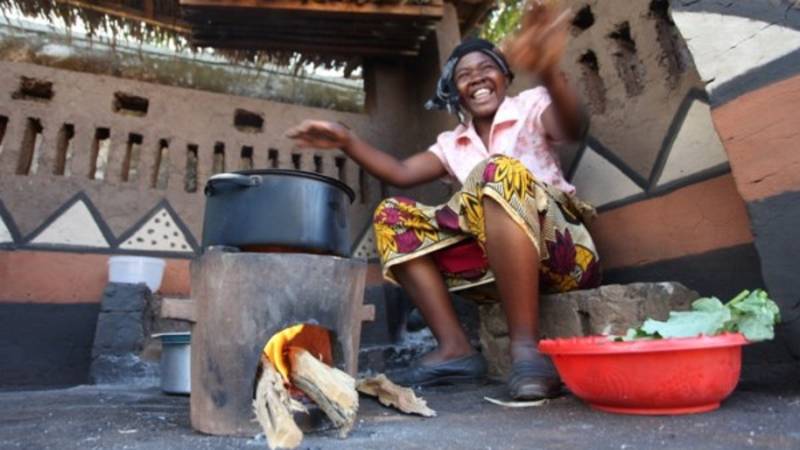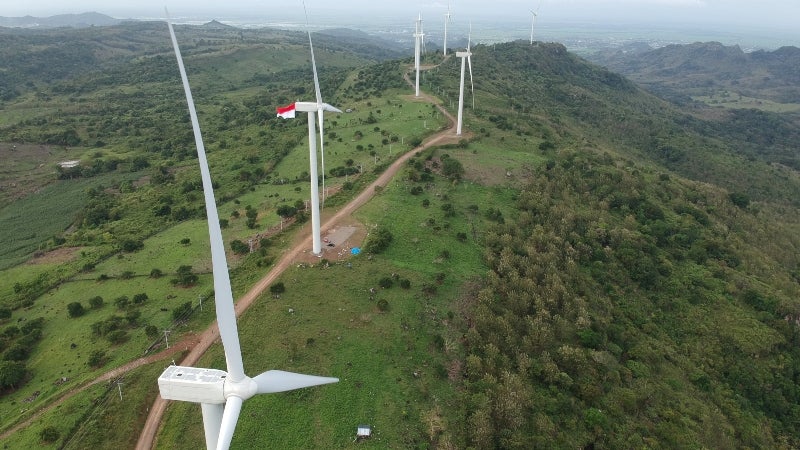

NOS EXPLICATIONS SUR LA COMPENSATION CARBONE DANS LE SECTEUR DE L’AVIATION
Vous le savez sûrement, l’aviation est l’un des secteurs les plus polluants, au même titre que l’industrie automobile ou de la production électrique. Malheureusement, et contrairement à ces dernières, la technologie permettant de rendre l’aviation 100 % écologique n’existe pas encore. Nous pensons toutefois que l’aviation est essentielle au commerce international, à notre économie mondialisée et à la société dans son ensemble : la réduction des déplacements de personnes ou de marchandises – parallèlement à l’augmentation de la population mondiale – aurait des conséquences désastreuses sur notre quotidien.
C’est pourquoi nous nous sommes penchés sur les moyens de financer la réduction des émissions carbone dans les secteurs où la technologie existe mais où les investissements restent modestes. Nous nous sommes également engagés avec la communauté aéronautique pour travailler sur des initiatives permettant de réduire l’empreinte carbone des vols affrétés par nos clients, en investissant dans les nouvelles technologies et le carburant durable.
Nous pensons que le secteur aéronautique, bien que polluant en soi, peut être un bienfait, en s’attaquant aux 98 % de carbone émis par d’autres industries et en favorisant les investissements dans des programmes de compensation carbone permettant de réduire l’impact des activités humaines sur le climat.
LE FONCTIONNEMENT DE LA COMPENSATION CARBONE
RÉSERVATION AFFRÈTEMENT
Si vous souhaitez compenser vos émissions de carbone, faites-le savoir à votre chargé de clientèle ACS au moment de la réservation de votre (vos) prochain(s) vol(s) : il ajoutera alors un montant équivalent à 0,5 % de votre affrètement sur votre facture. Cette demande devra être confirmée par une signature sur le formulaire de réservation.
VOTRE FACTURE
Les frais de 0,5 % apparaitront comme une ligne supplémentaire sur votre facture, sous la rubrique « Contribution à la compensation des émissions carbone ».
INVESTISSEMENT COMPENSATION
Votre paiement n’est pas immédiatement utilisé pour acheter des crédits carbone. Il va d’abord dans un fonds de compensation.
ESTIMATION DES ÉMISSIONS
Une fois par trimestre, ACS procède à un processus de réconciliation pour estimer les émissions de carbone de l’ensemble des vols compensés, en les comparant aux fonds versés par ses clients à des fins de compensation.
ACHAT DE CRÉDITS CARBONE
Cet argent est ensuite utilisé pour acheter des crédits carbone via la bourse du carbone, crédits qui sont alors immédiatement retirés. Notre objectif est de compenser plus d’émissions que ce qui a été réellement généré.
ANNONCE DES PROJETS
ACS communiquera à ses clients qui ont choisi de compenser leurs vols les projets dans lesquels ils ont investi.
LES PROJETS DANS LESQUELS NOUS INVESTISSONS

POÊLES HESTIAN
Réduisent les émissions de gaz à effet de serre en consommant moins de bois.
Les poêles inefficaces que l’on trouve en Afrique contribuent à la déforestation, consommant plus de bois que nécessaire et générant une dangereuse pollution de l’air domestique. Bien qu’il s’agisse de l’un des pires problèmes environnementaux – également à l’origine de la mort de nombreux jeunes enfants – il est en fait l’un des plus faciles à résoudre.
La population africaine ne cessant de croître, la déforestation bat son plein ; les forêts laissent la place à l’habitat humain et le bois est récolté plus rapidement qu’il n’est replanté. Les poêles améliorés de Hestian et les projets d’efficacité énergétique mis en place en Afrique australe réduisent directement l’utilisation de bois et la fumée de cuisson émise à l’intérieur des logements. En date du 30 juin 2019, Hestian avait permis à plus de 566 658 foyers d’utiliser des poêles améliorés et aux institutions locales d’utiliser 1 239 poêles fixes, contribuant à la création de plus de 2 000 emplois.

WIND INDONESIA
Une énergie renouvelable à un prix abordable.
Les éoliennes produisent une énergie propre, sans émissions nocives pour l’environnement. Le fait d’investir dans des projets d’énergie renouvelable à bas coût, comme UPC, permet donc de réduire la quantité de combustible fossile nécessaire à la production d’électricité, ce qui se traduit par une diminution de la pollution atmosphérique et des émissions de dioxyde de carbone.
Situé dans la région de Sidrap, au sud de Sulawesi, en Indonésie, le parc éolien Sidrap, de 75 MW, en constitue un bon exemple. Premier parc éolien utilitaire en Indonésie, Sidrap a commencé à fournir de l’électricité au réseau PLN du sud de Sulawesi en mars 2018. Le parc est constitué de 30 turbines Gamesa de 2,5 MW situées sur un groupe de crêtes venteuses, balayées par des vents puissants. La communauté locale soutient le projet à 100 %. De nombreux emplois ont été créés tant dans le développement du projet que dans sa construction, la majorité étant occupée par les habitants de la région.
FAQ
POURQUOI ACS N'INCLUT-ELLE PAS AUTOMATIQUEMENT DES FRAIS DE COMPENSATION ?
Nous avons décidé de proposer une demande d’acceptation (« opt-in ») plutôt que d’inclure ce paiement d’office (« opt-out »), car nous savons que certains de nos clients agissent déjà pour le climat par le biais de leurs propres programmes de compensation. Il est donc plus juste et plus transparent de proposer un choix clair et net.
PUIS-JE CHOISIR DE SURCOMPENSER ?
Oui, vous pouvez demander à votre chargé de clientèle ACS de payer plus que la contribution de 0,5 %.
QU’EST-CE QUE L’EMPREINTE CARBONE ?
Lorsque vous prenez l’avion ou que vous conduisez une voiture, vous libérez du dioxyde de carbone dans l’atmosphère. Votre empreinte carbone est donc égale à la quantité de CO2 libérée suite à vos actions et déplacements.
QU’EST-CE QUE LA COMPENSATION CARBONE ?
Si vous voyagez en avion, vous émettez du CO2 dans l’atmosphère. Vous pouvez désormais agir positivement et compenser ces émissions en investissant dans des projets visant à réduire la quantité totale de CO2 émise.
COMMENT FONCTIONNE LA COMPENSATION AVEC ACS ?
La compensation s’obtient en achetant et en retirant ce qu’on appelle un crédit carbone. Les crédits carbone résultent d’une politique internationale visant à atténuer l’essor des gaz à effet de serre. Les programmes climatiques vendent des crédits carbone afin de financer le déroulement de leurs activités. Chaque crédit équivaut à une tonne de dioxyde de carbone.
QU’EST-CE QUE CELA SIGNIFIE ?
Si vous réservez un vol avec nous, et souhaitez compenser le carbone émis pendant votre voyage, un pourcentage sera appliqué à votre facture. Cette contribution se base sur l’analyse de plus de 8 000 affrètements et sur les taux actuels du marché des crédits carbone. Nous reviendrons plus tard sur notre méthodologie de calcul. L’argent versé au titre de la compensation est investi dans l’achat de crédits carbone auprès d’un programme climatique. Pour que ce dernier puisse vendre des crédits carbone, il doit répondre aux critères suivants :
Vérifiable.
Toutes les réductions d’émissions générées doivent être véritables et avoir réellement été observées.
Mesurable.
Toutes les réductions d’émissions doivent être quantifiables à l’aide d’outils et de techniques de mesure reconnus.
Additionnel.
Les gestionnaires des projets doivent être en mesure de prouver que les réductions d’émissions sont additionnelles et n’auraient pas pu exister sans l’aide de la finance carbone.
Vérifié de façon indépendante.
Les réductions d’émissions doivent être contrôlées par un vérificateur tiers indépendant et agréé, ayant des compétences dans le pays et le secteur dans lequel le projet est mis en œuvre, afin de fournir un niveau de garantie adéquat.
Unique.
Le double comptage des crédits carbone est évité en utilisant des registres, qui permettent de suivre la propriété et l’annulation éventuelle selon la réglementation en vigueur.
Une fois ces critères réunis, le programme sera certifié par l’une des instances de crédit mondiales. Nous investissons uniquement dans des projets certifiés par les Nations Unies (https://unfccc.int) et Gold Standard (www.goldstandard.org), deux des principales instances de crédit mondiales.
AI-JE LA GARANTIE QUE MON ARGENT EST RÉELLEMENT INVESTI?
Oui. Le fait d’investir dans des projets certifiés par l’ONU et Gold Standard garantit le respect de tous les niveaux de contrôle et de conformité des projets pour lesquels les crédits sont émis. Cela signifie que les sommes dépensées dans une compensation carbone achetée par ACS sont certifiées comme étant authentiques et alimentent directement le projet environnemental.
QUE SIGNIFIE LE RETRAIT DU CRÉDIT ?
Le retrait est la dernière étape du cycle de vie des crédits carbone : une fois le retrait effectué, les crédits ne peuvent plus être utilisés à nouveau, ni être comptabilisés deux fois (c’est-à-dire utilisés deux fois).
ALORS, OÙ VA MON ARGENT ?
Si vous optez pour la compensation carbone de votrevol, nous investissons chaque centime de votre argent dans des crédits carbone provenant de programmes climatiques de premier plan. Nous ne percevons aucune commission et n’encaissons pas de marge. Il existe de nombreux types de projets climatiques dans le monde, notamment dans les domaines des énergies renouvelables, de la gestion des déchets, de la foresterie et de l’agriculture, des biocarburants, des technologies de l’énergie et des carburants, de la protection de la biodiversité, du développement durable et de la protection des écosystèmes. En choisissant de compenser votre vol, vous fournissez un soutien financier essentiel au développement de ces programmes et faites un choix positif pour l’environnement en aidant à réduire les émissions de gaz à effet de serre.
COMMENT CALCULEZ-VOUS L’EMPREINTE CARBONE DE MON VOL ?
L’empreinte carbone est un concept relativement nouveau pour l’aviation privée, c’est pourquoi nous avons développé, en partenariat avec la bourse du carbone, une méthodologie unique pour estimer l’empreinte carbone de chacune de nos réservations. Afin de calculer l’empreinte carbone d’un vol, nous avons besoin de connaître (1) la distance point à point du vol et (2) la consommation de carburant estimée selon la catégorie d’avion. Les vents contraires et arrière ayant un impact considérable sur la consommation, il est impossible de prévoir avec précision la quantité d’émissions générée. Il était donc nécessaire de créer une méthodologie qui nous permette d’estimer la consommation de carburant de chaque vol et, par voie de conséquence, les émissions de gaz à effet de serre générés lors de la combustion de ce carburant.
Nous calculons la distance point à point des vols en utilisant les coordonnées de l’aéroport, disponibles sur openflights.org. Voilà pour la partie facile. Nous proposons une grande variété d’avions, et chacun affiche des besoins en carburant différents. Nous utilisons un ensemble de données provenant de l’Organisation de l’aviation civile internationale (OACI), qui incluent le profil de consommation de carburant de plus de 150 types d’avions, selon leur indicatif d’aéronef IATA. Les données de l’OACI sont fondées sur des essais moteurs réels et constituent la source de données la plus précise existant à ce jour pour l’aviation privée. Chaque avion consomme du carburant à un rythme différent selon la phase du voyage dans laquelle ils se trouve (décollage, atterrissage, altitude de croisière maximale). Les données de l’OACI sont divisées en segments de 500 nm afin de fournir l’estimation la plus granulaire et la plus précise possible du taux de combustion du carburant pour chacune de ces phases. Nous comparons l’avion que vous avez réservé avec son profil de consommation en carburant et calculons le volume total de carburant consommé en fonction de la durée du vol. Une fois en possession de la consommation totale, nous pouvons facilement calculer les émissions de GES associées. Nous utilisonsun facteur d’émission relatif au carburant d’aviation, publié par le ministère britannique de l’Environnement, de l’Alimentation et des Affaires rurales.
COMMENT CALCULEZ-VOUS LE COÛT DE LA COMPENSATION CARBONE?
Notre partenaire, la bourse du carbone, permet à des milliers de programmes environnementaux de faire connaître leur liste de crédits à vendre. Chacun d’eux a le potentiel d’émettre des milliers, voire des millions, de tonnes de crédits de carbone chaque année.
Nous analysons, avec notre partenaire, le marché des crédits carbone, et sélectionnons un prix moyen par crédit. L’objectif est de soutenir un portefeuille de projets de haut vol (la qualité est très variable) situés dans différents endroits du monde et représentant des investissements dans différents types de projets environnementaux, de l’énergie renouvelable aux programmes communautaires.
COMMENT CALCULEZ-VOUS LE MONTANT DE MA CONTRIBUTION AU FONDS DE COMPENSATION CARBONE ?
Nous avons analysé, toujours en partenariat avec la bourse du carbone, l’historique de milliers de vols afin de calculer le coût de compensation de chaque trajet par rapport à la valeur totale de la réservation. Nous avons constaté qu’un taux de contribution de 0,5 % de la valeur de la réservation nous permettait de compenser 98 % des vols analysés, ACS s’engageant à compléter le fonds si les sommes recueillies ne sont pas suffisantes.
À la fin de chaque trimestre, nous calculons les émissions de carbone émises par tous les vols compensés afin de nous assurer qu’un nombre suffisant de crédits peut être acheté, en fonction des prix pratiqués sur le marché. Dans l’éventualité où il y aurait un manque, nous (ACS) comblons la différence. En cas d’excédent, celui-ci est également investi dans des programmes. Nous nous assurons ainsi de compenser plus de CO2 que ce qui est généré par les vols participants.
QUEL EST L’IMPACT DU CO2 ?
La combustion d’énergies fossiles et la déforestation ont fait augmenter la concentration en dioxyde de carbone dans l’atmosphère d’environ 43 % depuis les débuts de l’ère industrielle. Actuellement, environ la moitié du CO2 libéré reste dans l’atmosphère et n’est pas absorbé par la végétation ou les océans.
Si l’augmentation de la concentration en dioxyde de carbone conduit à une hausse de la température à la surface du globe, cette dernière entraîne à son tour une augmentation de la concentration en CO2, générant ainsi une véritable boucle de rétroaction positive. La planète Vénus a connu un emballement de l’effet de serre. Résultat : son atmosphère est composée à 96 % de dioxyde de carbone.
Le CO2 peut être absorbé de différentes manières, notamment par les masses d’eau (comme les mers et les océans), l’eau gelée (comme les calottes glaciaires polaires et les glaciers) et la végétation (comme les forêts humides), des réservoirs naturels connus sous le nom de « puits de carbone ». La manière la plus efficace d’atténuer l’effet de serre est soit d’empêcher la production de CO2, soit de le réabsorber dans ces puits de carbone.
Le programme de compensation de carbone qu’offre ACS contribuera à un certain nombre de projets visant à réduire la quantité de CO2 produite dans un premier temps (grâce à des initiatives d’énergie verte) ou à améliorer les puits de carbone en luttant contre la déforestation ou en favorisant le reboisement.
